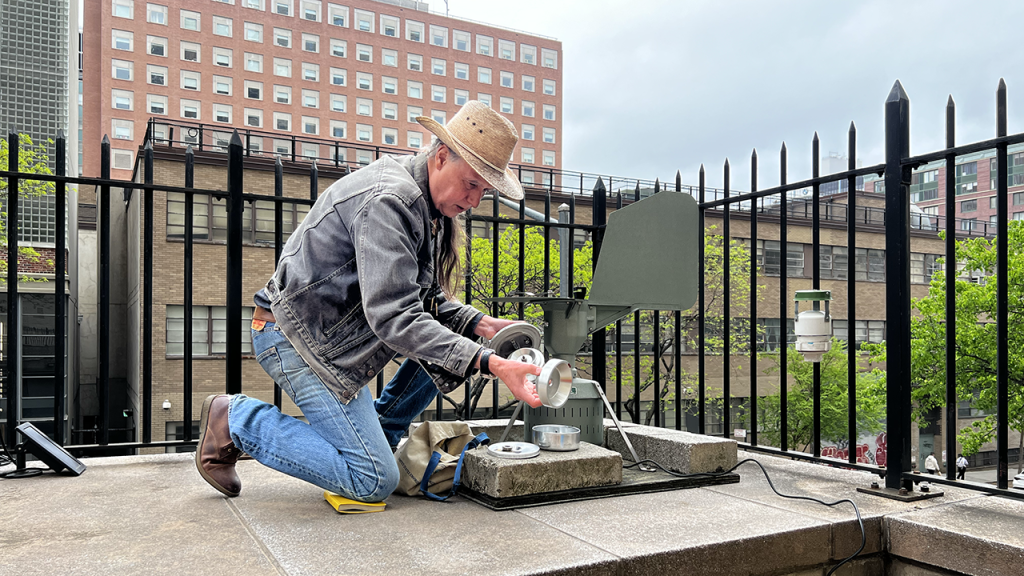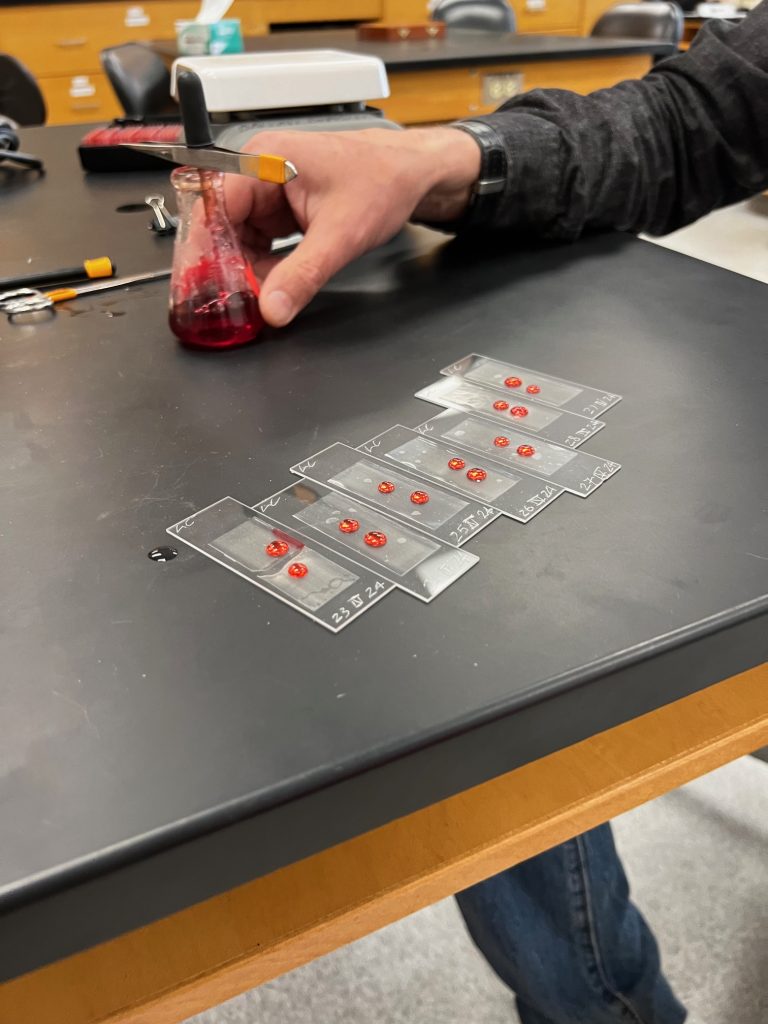Spring allergies got you sneezing yet?
Blame it on the mulberry, birch, and oak trees if you’re in Manhattan, said Guy Robinson, Ph.D., where Fordham University maintains the only official pollen monitoring station in the city. Those three species dominated Robinson’s latest sample slides heading into what’s traditionally the peak pollen weeks of the season—the first two weeks of May.
Robinson maintains and collects pollen samples from the station, located at Fordham’s Lincoln Center campus on 60th Street east of Columbus Avenue, as well as another station at Fordham’s Louis Calder Center in Armonk, New York. Throughout the spring and summer, he feeds the data to the National Allergy Bureau of the American Academy for Allergy, Asthma & Immunology and posts a spreadsheet on @FordhamPollen on X as a public service.
Robinson has been at it for 25 years, while teaching biology and paleoecology in the Department of Natural Sciences, first as a senior lecturer at Fordham College at Lincoln Center, now as a visiting scholar. Once a week, on Tuesdays, he hops up on a wall outside the McMahon residence hall on 60th Street and unwraps a clear inch-wide strip of tape from a cylinder in the Burkard spore trap. The cylinder makes one complete turn in a week. The top of the machine spins like a weather vane, capturing the microscopic particles that cause the seasonal suffering of so many.
After coiling the tape into a metal canister, he carries it to a biology lab in Lowenstein. There Robinson snips the tape into segments—one for every 24-hour period. Then he begins the tedious process of counting pollen particles.
On April 30, peering through a microscope while working a rudimentary clicker counter with his left hand and making notes with his right, Robinson said that by now, he recognizes most of the different tree pollens “just at a glance.” That’s how he gets the number we all know as the “pollen count”—the number of pollen particles per cubic meter of air.
He added, “Humans are still better at counting pollen than any machine.”
No More Sycamores
Robinson has a paper in review now for the Urban Design and Planning Journal suggesting that municipalities should take into consideration the effects of allergens when creating their tree-planting plans.
“They do not need to be planting sycamores in the city,” he said, noting that the species is highly allergenic. Fortunately, the sycamore pollen numbers are already subsiding for this season.
Trees like cherry, hawthorne, and pear, with noticeable flowers, he said, are not major contributors to allergies because they are insect pollinated (the pollen is not carried by the wind).
Those wreaking the most allergy havoc are oak, birch, alder, walnut, sycamore, and elm. Pine pollen is not a major allergen, although pines produce a lot of pollen, he said.
Every year is slightly different in terms of timing and quantity of pollen, said Robinson. But tree pollen nearly always peaks in the same order each year, with sycamore pollen appearing first.
So what can you do if you are allergic to pollen?
“What we learned during COVID is that what does seem to have helped is wearing a mask,” Robinson said. “Even the cheapest ones filter out most of the pollen.”



